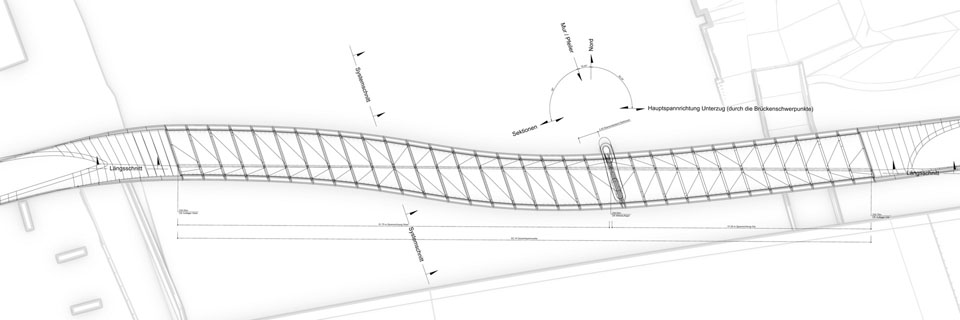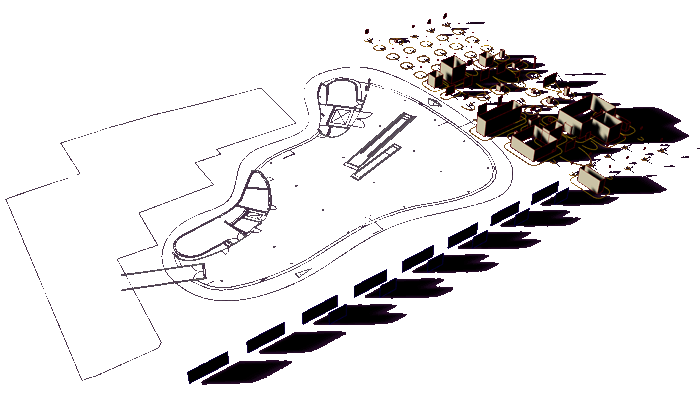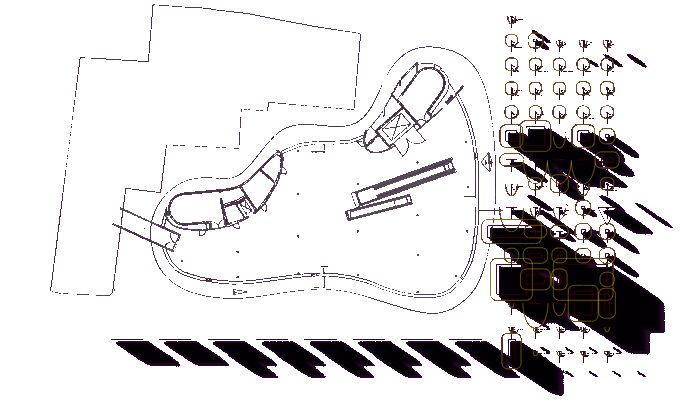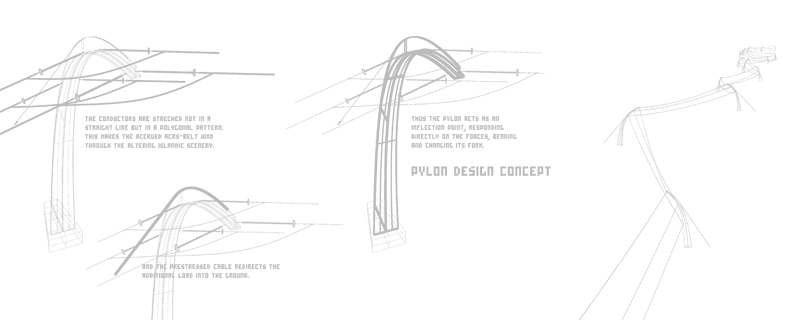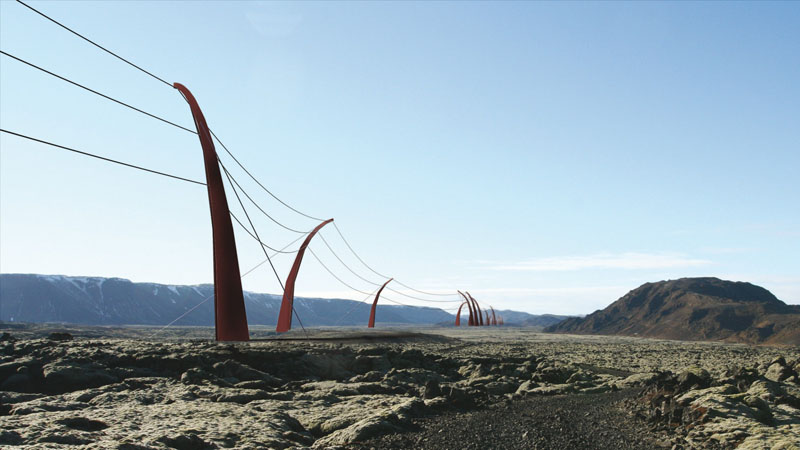With analog approaches complex design ideas often are barely - or not at all - conceivable. On the other hand, the mapping of ideas through digital processes creates new possibilities for forging things.
Some paradigmatic designs and designing tools shall be shown here in this brief overview. They were developed in different constellations. The links provided lead to further details and full credits. For a complete list of works, please refer to richdank - the complete story.
The first basic idea was to create a three-dimensional expression of the elegant sweep of the proposed pathway connecting the Murfeld area of Graz with the town of Feldkirchen. The visualization of forces is another central intention of the concept. The compression and tension zones of the deflection line are carved out and can be easily read in the longitudinal view. In sum, this also results in the third important matter: the optimized utilization of the building materials as well as their fabrication and assemblage.
The spatial framework was intended to visually enhance the newly designed area and render it more attractive, regardless of the manifold site-specific constraints. Despite the seemingly curved shapes, all structural components consist of standardized, flat and straight profiles. Those are easily prefabricated, smoothly transportable and can be joined efficiently. The thorough parametric-algorithmic planning also allows for a wide range of adaptations down to the very last detail and throughout the whole planning process.
A few illustrations from the competition entry of 0704. Peter Mandl ZT carried out the preliminary structural analyses.
The jury underlines »[...] the very high sculptural quality of the design. The sophisticated construction as well as the shifting position of the lower belt in relation to the axis of the bridge add a high degree of tension to the project.«
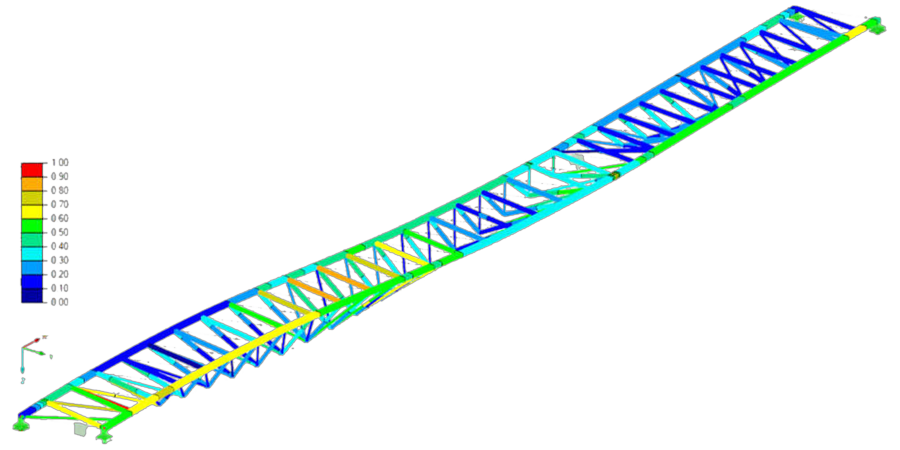
Above: Symbolic exhibition objects and a possible placement process for Hartmut Skerbisch - Media Works.
Below: An extract of the works listed in tabular form.
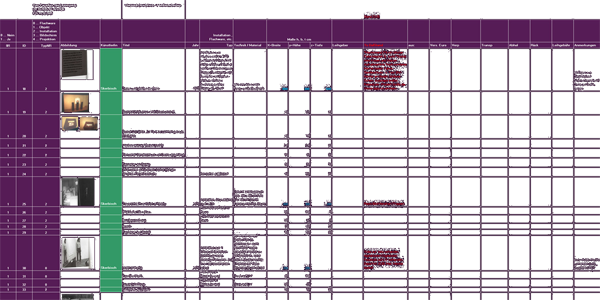
Skerbisch
Mediated exhibition design for the media artist
2015
»His [AN Hartmut Skerbisch's] focus lay from the outset on questions about space. Whether it is his first architectural designs, his media works, sculptures or dialogue with literature and music, the issue of space is always present. Electronic space removes places, brings the far-off nearer and re-defines space - it attempts to lead us to our present.« (Günther Holler-Schuster, 2015, The Paradise the Downfall)
First off, the exhibition architecture is to emerge in digital space from the fundus of the artist's work - that was the initial concept. A detailed, editable dataset was elaborated, which was also used in logistics later on. This information induced three-dimensional objects with additional observation-parameters. Eventually, those were generatively and/or manually placed and evaluated in the exhibition space.
A design tool for Manfred Wolff-Plottegg.
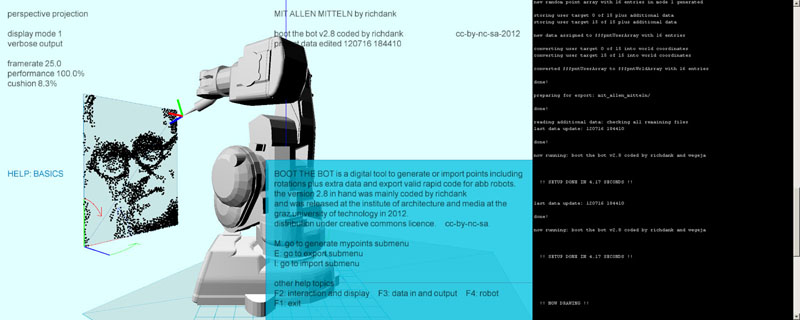
Boot The Bot with the help window faded in - left the interactive visual surface, right the console output.
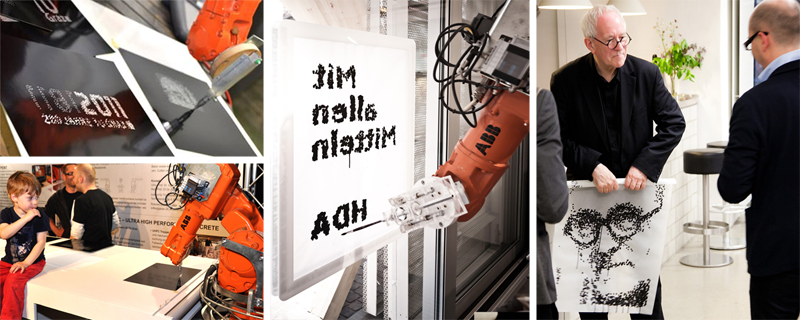
Two Pictures from TUG's 200 years anniversary, the Chinaink Painting Robot plus Wolfgang Tschapeller, Peter Cook and Marjan Colletti picking up their portraits at the HDA exhibition By all means (from left to right).
Boot The Bot
Java-based simulation, code generator and live controller for ABB robots
2010-14
»It has at least two main contributions: first, it serves as a platform on which higher level algorithms can be placed, as evidenced by examples of projects ranging from complex timber joinery to painting images; and perhaps more importantly, it proposes a control system that may be better suited than existing proprietary software to the particular requirements of making.« (Sean Hanna, 2014, Review, ALGODeQ Award List)
Half a century has passed since the introduction of the first Unimate. Now robots finally have arrived in the minds (and projects) of creatives worldwide. This program solves issues concerning algorithmic and innovative offline programming of ABB machines in the context of artistic and architectural purposes.
Boot The Bot is a standalone, cross-platform digital tool to generate or import points (plus extra data) and export valid RAPID code for immediate execution on ABB robots. This program is the basic software application for several projects and subsequent research themes in TU Graz's Fields of Expertise.
And it can operate live and online.
Different projects from papier peint that were implemented with Boot The Bot.
Stalk / Power Pylons
High-voltage: transmission line towers
2008
The route of the cables is a three-dimensional curve that smoothly flows within the topography or around manmade infrastructural interventions. To obtain the fully functional tensegrity system, it meanders even if there are no obstacles to circuit. Therefore, the points of inflection need to be computed to exactly match the force path.
ortene steel pylons support those transmission lines. In geometric terms, they provide the control vertices to a spline curve. In contrast to the versatile formation geometry of the large-scale linear layout, the basic section of the pylons is simply a pre-stressed T. This approach ensures economic manufacturing and transportation - even though each Stalk is unique in its shape.
The Association of Icelandic Architects (2008, Landsnet Competition Selection Committee Report) commented the project by 0704 as follows: »Innovation with the play of support structures in the landscape. These towers seem to sprout out of the earth. [...] Corten steel is a perfectly normal choice of material and brings to mind volcanic activity and hot springs.«


